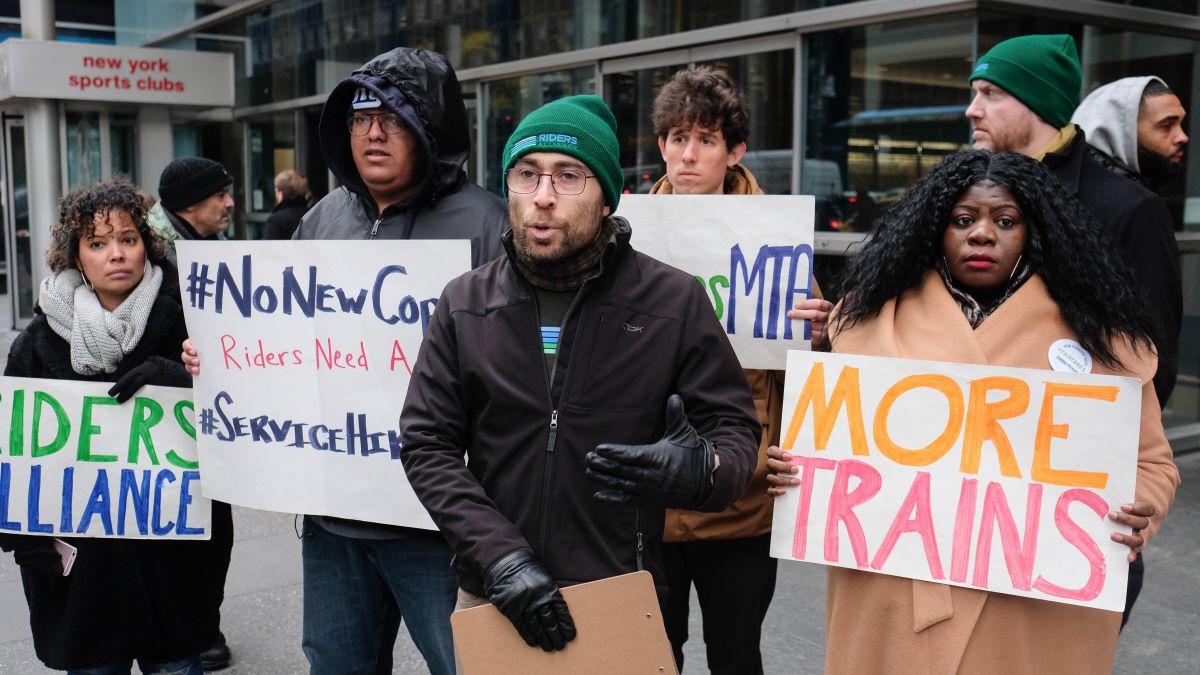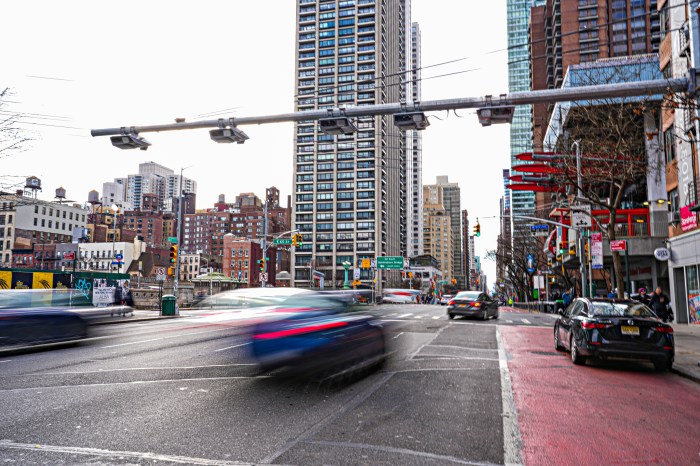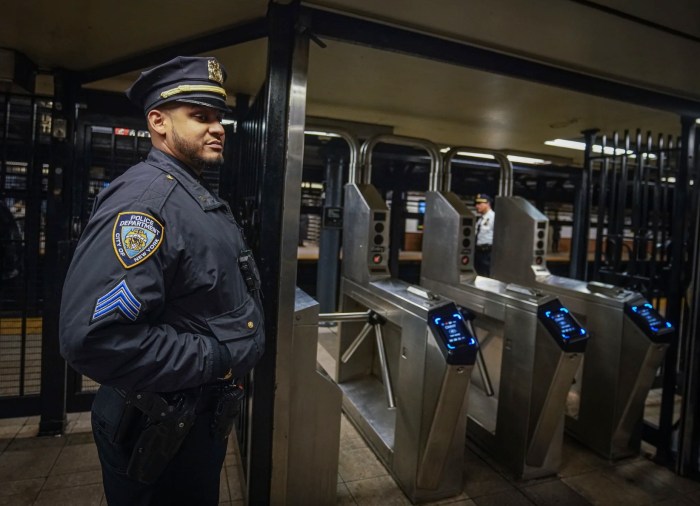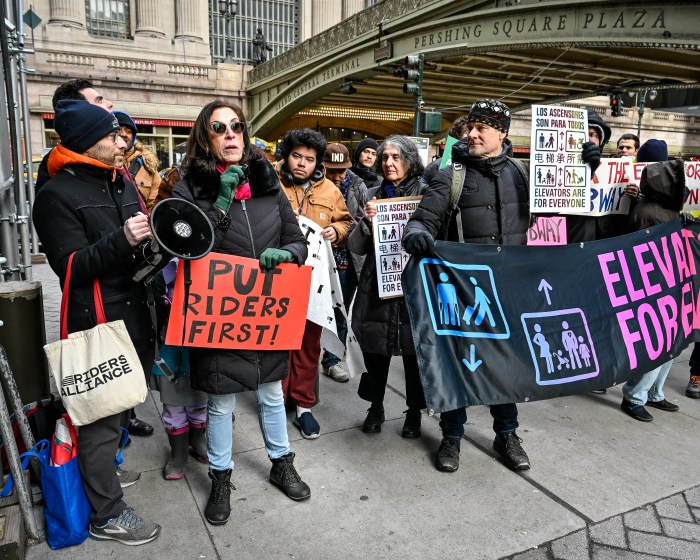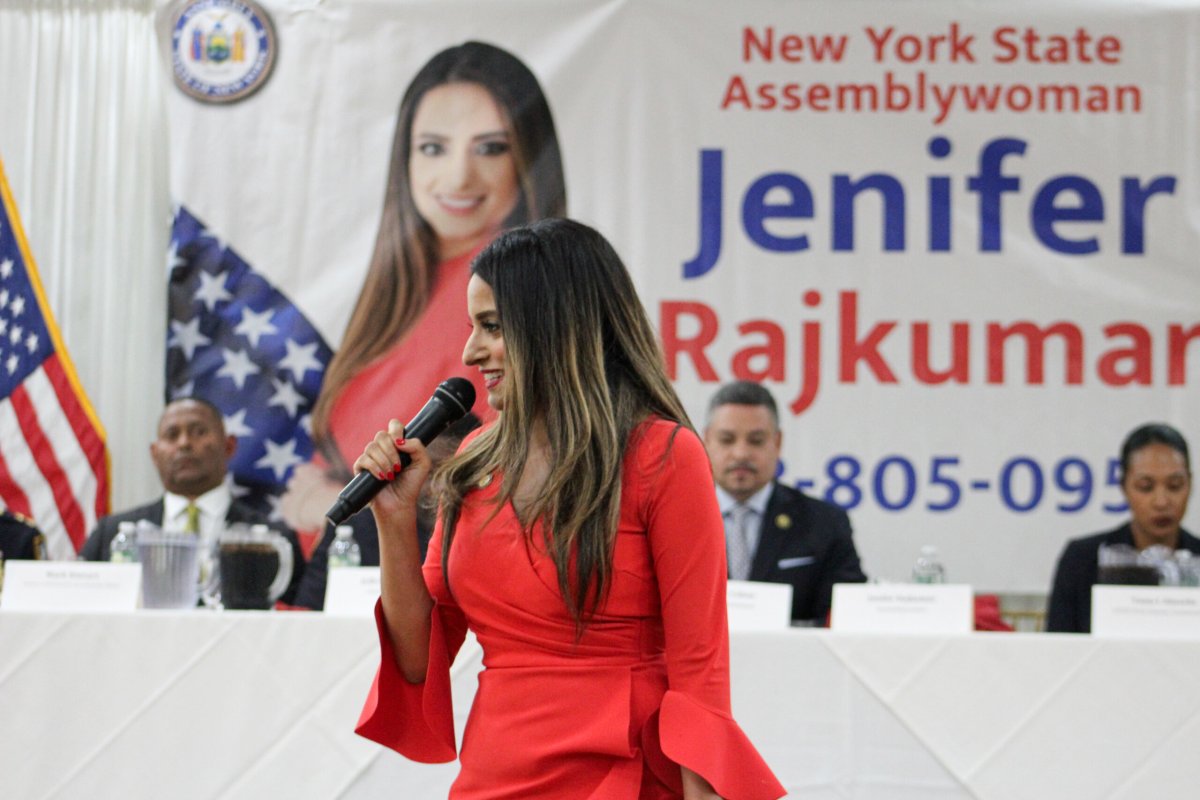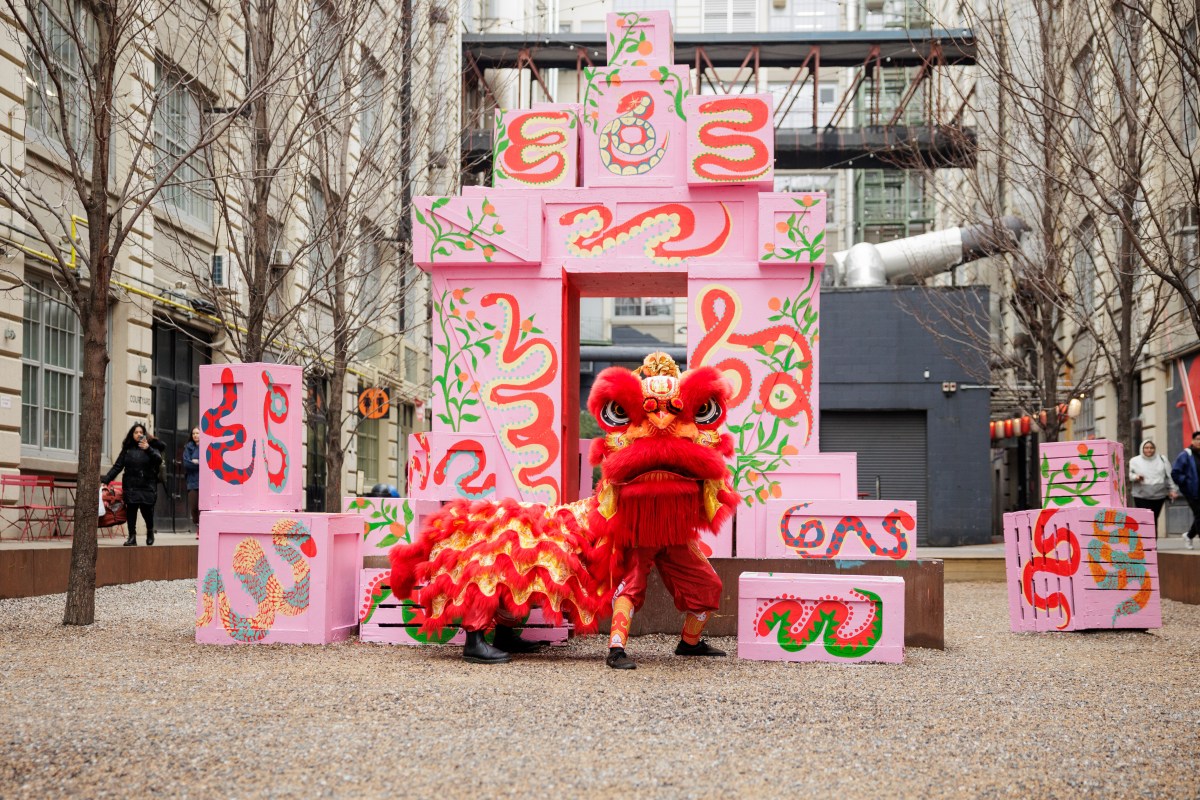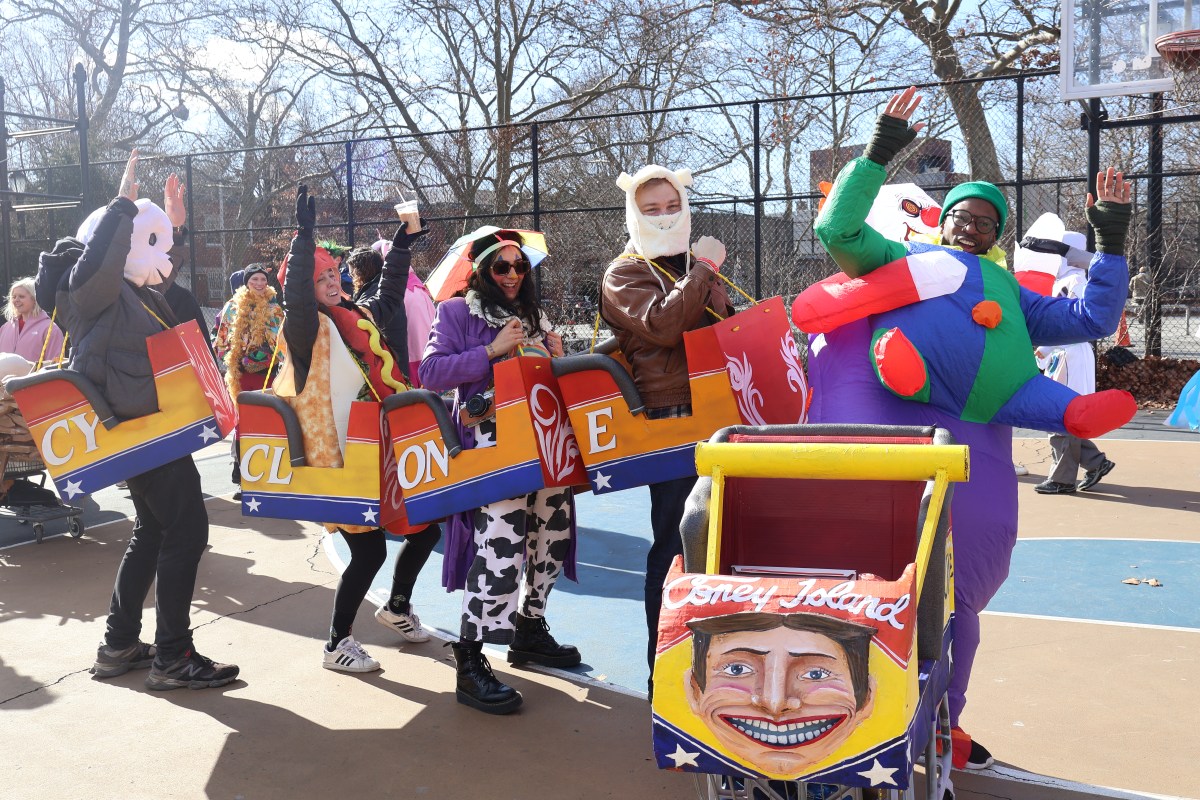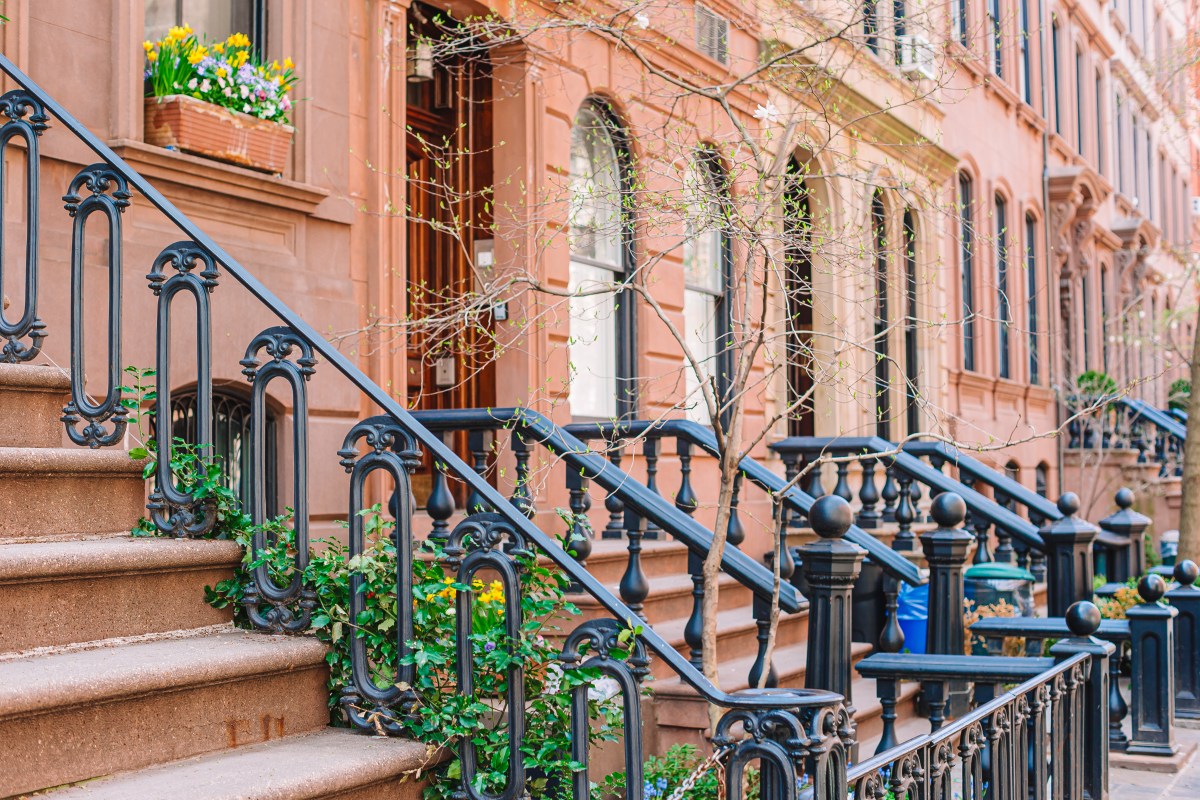The money that the MTA plans to spend on hiring new police officers could instead bring a boost in subway service, according to a new analysis from the Riders Alliance.
The report released Thursday builds on the advocates’ opposition for new police officers on the grounds that the hundreds of millions budgeted for new MTA officers could be better spent on improving service.
Riders Alliance found the $249 million the MTA plans to spend on 500 officers over the next four years could bring a 15 percent increase in service during the midday on weekdays, between 9:30 a.m. and 3:30 p.m., as well as weekends, from 6 a.m. and 8 p.m. That translates to shedding a minute or two off riders wait times during those windows.
“So waits that are now between six and ten minutes would be between five and eight minutes — and that would make a significant difference,” said Danny Pearlstein, spokesman for the group, at a rally outside Governor Andrew Cuomo’s office on Dec. 5.
Cuomo has instructed the MTA to hire the new officers to police “quality of life” issues, including homelessness in the subways, fare evasion and worker assaults. Those cops would be an addition to the 2,500 NYPD police that currently patrol the transit system.
Transit and social justice groups have strongly opposed the new hirings, citing fears of overpricing while major crime rates in the transit system have remained relatively flat. At the same time as the MTA has pursued bring new officers, a handful of viral videos that have surfaced in recent weeks showing aggressive policing of fare evaders and illegal vendors selling churros and candy in the subways.
Though a New York Post analysis found that overall crime has increased in the system. And the MTA, as well as several members of its board, has argued that smaller crimes, like fare evasion, and homelessness need to be better addressed.
“The facts are these – we’ve made unprecedented investments in the system and we’re seeing the results,” said Caitlin Girouard, a spokeswoman for Cuomo, in a statement, “but hate crimes, robberies, and assaults against workers are up and the system needs to be safe or this is all for nothing.”
Danna Dennis, a community organizer at Riders Alliance, said a midday ramp-up of subway service would have been a help for her when she worked as a home health aide and commuted during unconventional hours.
“The truth is that there are still a lot of folks in the outer boroughs and throughout the city that need to get to work outside of [traditional rush] hours,” Dennis said. “And the reliability of transit for them means a lot.”
The injection of funding could add roughly 256 roundtrips in the subways each year, added what could be room for another 300,000 commuters, according to the analysis.
The MTA did not dispute the findings in the report, but disagreed with its premise.
“The MTA’s top priority is the safety of our eight million daily customers and employees and it’s foolhardy to pit safety against service,” said MTA spokesman Shams Tarek in a statement. “We’re investing billions of dollars into improved service, and the results are already showing in on-time performance which is at its highest levels in half a decade, ridership is looking up and our next capital plan accelerates accessibility at a faster rate than in the history of the subway system.”



